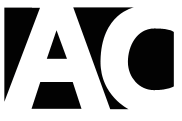When I started freelancing, my sole expenses were Internet access and my Elance Membership. My computer was slow and didn’t hold a charge. My software was outdated and limited the projects I could take. I did accounting and scheduling in Excel and Word.
But I made it work, so if you’re just starting or your budget is extremely tight, what I’m about to show you is not VITAL. No single tool on this list is required to be a successful freelancer. There are free alternatives to every one of them.
However, for those that can afford it or that want to speed up and mobilize their services, these are exceptional SaaS tools that make it possible. Each has a monthly fee and a web-based backend or login on your desktop, but for my money they are each integral parts of my business today.
-
Freshbooks
This was the first SaaS tool I ever paid for and the only on this list I don’t think I could live without. It’s inexpensive, extremely powerful, mobile-friendly and by far the most useful tool I have.
From cutting invoicing time down by 75% to ensuring my clients pay faster and with the methods I need them to use, Freshbooks is a must have for me. If you are a freelancer with more than 5 invoices going out per month, I highly recommend Freshbooks.
-
Google Apps for Business
I wanted to use my own domain for business email and the tools provided in CPanel on my host were not ideal. I also more or less hate Outlook and Mail (my two alternatives). Google Apps for Business allows me to receive, send and store all of my @greatleapstudios.com email in Gmail.
Everyone in the organization gets the same access at $6/month and it all integrates with Google Calendar, Google Drive and more. In short, it’s awesome and no more massive, resource hogging mail files on my computer.
-
Adobe Creative Cloud
Not everyone will agree with me here (I know because I’ve had this argument a few times), but Adobe Creative Cloud is a great investment for a small business that is years away from being able to afford the $4,000 license it would take to get all this software by itself.
The cost is high – this is the most expensive SaaS membership I have – but it’s worth it for instant access to Dreamweaver, Photoshop, Acrobat Pro, Premier and Illustrator on all of my computers (Mac or PC).
-
Office 365
This is a toss up for me. I have used Office for years and will continue to use it, but I prefer iWork for composition on my Mac and Office for editing on my PC. So I use Office much less than I once did, and the cost of a $200 upgrade was a little nauseating.
So the option to pay monthly and get multiple licenses that were interchangeable on my Mac or PC was great. I have a business account, but if you are an individual just getting started, the Home/Student package is $10/month for 5 Mac/PC licenses – a great deal in my eyes.
-
Podio
Podio is what I upgraded to from Basecamp. Ironically, the “upgrade” cost half as much as Basecamp and had proven much more versatile. I know people love Basecamp for being streamlined and quasi-intuitive, but it simply didn’t do most of what I needed it to do.
I’ve since moved my CRM to another service, but even still, I pay less for Podio and the CRM combined than I did for Basecamp, and I like it much better.
-
Zoho
After the sticker shock that came at the end of my Salesforce demo, I decided to go with Zoho. Technically, this is free as I am still using a free account. I expect to upgrade to the Pro ($12/user/month) account in the next three months, but it’s still about a quarter the price of Salesforce and without a yearly contract that needs to be paid in advance.
-
Bidsketch
I’m working on a more detailed review of Bidsketch in the next couple of weeks, but to put it simply, this is an extremely cool tool that can streamline a lot of what I do on a daily basis anyways.
The idea is that it creates various snippets that can be plugged into proposals, using tags like {my_company} or {client_name} to replace those things on the fly and speed up the process. For those that write long proposals, you’ll save a ton of time. For those that never bothered (like me), you’ll look more professional. Either way, you win.
-
Unbounce
Unbounce was hard to find. I knew exactly what I wanted – a landing page creator with split testing, Aweber integration, and a halfway decent price – and I did trials with at least a dozen other sites unsuccessfully.
Unbounce finally showed up in an ad feed somewhere and I was pleasantly surprised to find it did EXACTLY what I wanted. The cost is a little high but the customization and speed with which I can create variants or even set up a completely new landing page is amazing.
-
Aweber
Email marketing is an important part of any online business, and my autoresponder of choice is Aweber. It’s relatively affordable, scaling based on the number of subscribers, our deliver-rates have always been high, and the software (with a recent redesign) is very fast.
-
Dropbox
There are dozens of these cloud storage tools out there now, but Dropbox remains my favorite for a number of reasons. Not only are all of my files in there (moving would be a pain), but it keeps growing without my cost rising, it works very well on my phone and tablet, and the online portal is perfect when I’m on a different computer.
There are others – hundreds of them. I’ve tried a handful and I either didn’t like them or they didn’t fit my needs and therefore were not ideal fits for my business. But these are the ones I currently use and subsequently recommend based on the results I see on a monthly basis.
What software services are you using, why do you use them and what makes them better than the alternatives? I want to hear from everyone on their favorite and least favorite services.





